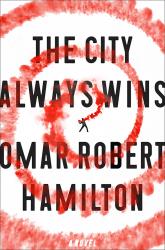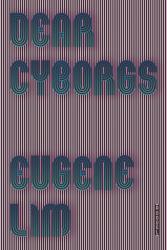
 Recently, after a season of heavy protests, a number of my friends vanished from social media. Some went quiet, some quit altogether. The ones who persisted were the ones who’d always been vocal, who’d already learned how to fold civic engagement—and occasional resistance—into their daily lives without experiencing the whiplash: engage, protest, engage, burnout.
Recently, after a season of heavy protests, a number of my friends vanished from social media. Some went quiet, some quit altogether. The ones who persisted were the ones who’d always been vocal, who’d already learned how to fold civic engagement—and occasional resistance—into their daily lives without experiencing the whiplash: engage, protest, engage, burnout.
Constant anger is good fodder for emotional combustion, so it’s no wonder that we were suddenly gifted with a handful of articles on the importance of self-care. Rolling Stone, for instance, published an interview in January called “How to Take Action—and Stay Sane—in the Trump Era,” in which L. A. Kauffman, a seasoned political organizer, advocated rejuvenation via books and nature. Coffeelicious featured a popular article called “How to #StayOutraged Without Losing Your Mind.” Post-election, I saw #selfmeditate all over social media.
David Foster Wallace once said, “I had a teacher I liked who used to say good fiction’s job was to comfort the disturbed and disturb the comfortable.” The weary resister has probably been disturbed for quite some time. She may be undone by this unruly political season and in search of some comfort. Two novels published this summer offer such a coolant—and even instruction—through astute and sobering depictions of revolt.
The City Always Wins, a novel by journalist and filmmaker Omar Robert Hamilton, grapples with revolution head-on. As cofounder of the Mosireen Collective, a media enterprise that archived and documented the Egyptian revolution, Hamilton played an integral role during the uprising of Tahrir Square, writing a series of pieces about his experiences for the Guardian and producing a trove of harrowing, vital mini-documentaries about the uprising that are still available online.
The City Always Wins is set in Cairo in 2011, shortly after Hosni Mubarak has been ousted from power, and is divided into three sections—the first and third taking place in 2011 and 2012, respectively, the second taking place in 2013, before and after the overthrow of Mohamed Morsi, Egypt’s first democratically elected president. Paced like a thriller and split into one- to five-page chapters, the story is narrated by a host of voices and freewheeling points of view that give it the feel of a frenetic communal diary from the front lines.
The two voices that dominate the narrative belong to Mariam and Khalil—she the daughter of two well-known Egyptian doctors, he a Palestinian American fixer for Western journalists. The two meet while being chased by men in balaclavas, and soon thereafter form a start-up media company called “Chaos”—aptly titled, as Mubarak warned that Egypt would “sink into chaos” if he left his post early—that does activist work for the revolution, gathering content for a podcast, magazine, and website. They and a pack of others—some Ph.D. dropouts, some nurses, some veteran activists—chase truth full-time, operating the company from a dilapidated apartment. Mariam and Khalil’s mutual commitment to the uprising brings them together. Hamilton doesn’t tease out their courtship. “And now she’s here, living with him, in bed next to him, reading the news on her phone.” Their romance is matter of fact, perhaps convenient, and secondary to the cause.
Western media professionals flood Cairo in hopes of capitalizing on the revolution. But now that Khalil is actively taking part in the uprising and has access to global communication channels, he’s fed up with their efforts. “For the first time in hundreds of years, we don’t need to sell our stories to France or England or America.” This not-so-sly commentary on Western journalism, colonialism, and capitalist hawking is one refrain of the novel. The barrage of Western media coverage irks the members of Chaos, whose “office has become a cerebral cortex at the center of the information war.”
Another refrain of the novel is the sounds of Cairo. Intricate sentences emerge like riffs: “Cairo is jazz: all contrapuntal influences jostling for attention, occasionally brilliant solos standing high above the steady rhythm of the street.” The placement of the alliterative consonants, coupled with short sentences, reflects the asymmetry of “jostling” and work to validate an otherwise abstract image. His hard c’s are counter the more digestible l’s and s’s. Indeed, one of the great pleasures of The City Always Wins is its winding, liturgical sentences set next to its staccato sentences that crack like gunfire. One such sentence captures a capacious view of Mohamed Mahmoud Street:
The coded language of car horns communicating endlessly in animal impulses of greeting and warning; the chorus of birds that fills the dusk air in Zamalek with chatterings before sleep; the echoing of the pleasure boats under the Abd al-Moneim Riad overpass; conversations private and public all shouted for the world to hear; the polyphony of grizzled adhans puncturing the predawn silence, announcing it is finally and unquestioningly time to leave the twenty-four hour bar at the Odeon Hotel and go home to bed.
Counterpoints and harmonies—the shifting sounds give register to the shifting of political power and the ebb and flow of protests in Tahrir Square. Chaos and their constituents are constantly on the move. Throughout the novel, Khalil and Mariam protest, gather, camp, go home, regroup, hunt for information, and, yes, even exchange the occasional Johnny Cash impersonation.
Even in the face of disappointment, Khalil sees jazz. After the revolution crumbles, after he finds refuge in America later in the book, he ruminates while out for a walk: “Manhattan’s great brickwork thicket crowds the sky. Jazz. The future. New York, New York. Isn’t that right, Ned?” Ned is Khalil’s father. It’s no surprise that their one shared pastime is music.
Shifts in point of view add to the sonic panoply, which for the most part flits between Khalil and Mariam. Usually sections begin in close third person, but sometimes the POV will zoom out and offer an omniscient perspective, then zoom in and filter through Khalil’s or Mariam’s consciousness. Occasionally the first-person singular morphs into the first-person plural, presumably conjuring the collective voice of the revolution. A quickly paced violence is then juxtaposed with protracted streams of consciousness, through sentences that sprawl across half the page, at least, passages that give voice to the family members of martyrs, including Abu Bassem, the father of one said martyr, who continually revisits the scene of his son’s death: “He’s walked through it a dozen times. The clap, the crack, the fall, the blood. The last breath. The phone call.”
In an info-war, reactions comes from all sides—left, right, center. Sometimes the seeker of information is barraged with a multitude of voices. Other times, she is stung by a single sentence. Hamilton implicates readers in this pandemonium, building entire sections out of tweets, news headlines, or unassigned chunks of exclamatory dialogue (arguments from disparate voices of the revolution), arranging them on the page in zigzagging clusters. Khalil yearns to write songs, a yearning that manifests now and then in lyrics interrupting—or rather, complementing—the flow of the narrative from songs like the traditional gospel of “I’ve Been in the Storm Too Long” to a tweaked, dispirited version of “People Get Ready” by the Impressions.
This sonic diversity mirrors the chaos and unpredictability of the revolution. One of Hamilton’s strengths is his ability to play different keys and genres without interrupting the narrative. Very occasionally, aphorisms strain the prose: “Nothing will ever change again,” Khalil thinks. “Maybe we really are all stuck in the Matrix.” These fall flat, undercutting a sonic and structural brilliance, but are rare.
Dear Cyborgs, Eugene Lim’s third novel—and his first with a large publishing house—sings the tune of language itself, music that Gertrude Stein and Gordon Lish could get behind, wherein the sentence is less a part than a whole unto itself. Gary Lutz, whom Lish published when he was an editor at Knopf, describes this allegiance in his seminal essay “The Sentence is a Lonely Place”: “in which virtually every sentence had the force and feel of a climax, in which almost every sentence was a vivid extremity of language, an abruption, a definitive inquietude.” To that end, here’s an example of such force that comes early on in Dear Cyborgs: “I’d never once seen the rustle of a brother-like or sister-like fragment, ever, and so thought he was mocking the teacher.”
Vu Nguyen is the muse of the novel and the childhood best friend of the unnamed narrator. When the book opens, they are “the only Asian boys in our grade” in small-town Ohio, where they bond over a comic book about a “stoner chipmunk with bizarre martial arts skills coupled with troublesome anger management problems who mostly seemed to get into political squabbles with his unreasonably drawn girlfriend, a dark-haired skip tracer named Lana.” Vu’s father is a persecuted scientist outrunning Communists. The narrator’s father is a binge-drinking engineer who has trouble holding a steady job. Vu’s family’s house is “deliciously shabby.” Immediately upon waking up, Vu reads comic books in bed. He’s a dark, withdrawn, and lonely soul who convinces the narrator try acid, essentially passive and overrun with Vu’s influence. (Indeed, the whole book feels as if it’s under the influence and could be read as a series of hallucinations.) The two friends eventually fit into a group “shunned for their fatness or queerness or intelligence or non-Christian-ness, or some combinations thereof.” The narrator’s family moves to Chicago, and the friends part ways, but Vu’s mark remains.
The final section reunites the friends when the narrator is working in a comic-book shop called Zones. For the bulk of the novel, though, Lim thrusts readers into a bizarre, science-fictive sequence of dreams, memories, and monologues, most of which take place in the near future or possibly an alternate reality. The dreams come from an older narrator named Frank Exit, who may or may not be the same narrator from the beginning section—it’s never really clear. Frank lives in a fourth-floor walk-up in New York City and reads detective novels and waxes philosophical in karaoke bars with his friends, Dave and Muriel. Frank and Muriel form a vigilante superhero group they call Team Chaos. A good portion of the book is taken up by their swapping stories about artistic failures, the crushing demands of capitalism, and personal loss. Muriel, despite her “foundling extraterrestrial” status and real-live superpowers, is a social worker, “though she’d rather be a poet and a painter.”
An eccentric cast emerges from their storytelling: there’s Richard Aoki, the Asian American Black Panther; there’s Ms. Mistleto, Frank’s mysterious nemesis and maybe-sister, who’s forced into a “corporate labor camp” after an Occupy protest; there’s Kim Jin-suk, an artist who lives in a box for nine months to protest worker persecution; and there’s Prince Surdenk Tomstita, whose king-and-queen parents are executed when they sell a magical superfood seed to a corporation for the “funding of a massive development plan.”
Readers would be advised, if and when confusion sets in, to return to the opening chapter and mine it for clues as to how to read the novel. “I met Vu in a dream” is one clue; “I don’t think Vu knew the entire story or the truth about his origins” is another. Indeed, these “Origin Stories” fold into one another, modulating like a Rubik’s Cube of humanist Künstlerromans. Perhaps the biggest clue of all, though, lies here:
My memory of childhood therefore, before landing in that small town where I met Vu, is less a blur than a handful of orphaned film clips, too short and too few in number to add up to much. I remember only strange bits: the taste of dark chocolate in a neighbor’s Oldsmobile, pink lotion on a girl’s sunburn, a teacher’s stare marked with hatred, a cut to my finger with my mother’s razor. Bits with no story to them but my name.
Lim is bent on the novel-as-puzzle-box, and he’s not giving anything away too easily. Parentheticals cut through the narrative, engaging philosophies of protest. Five very short “Dear Cyborgs” sections appear between chapters and include daily “puzzlers.” Characters within character monologues tell of other characters. The befuddlements are endless, but patience is rewarded when one persists through all the “orphaned film clips” and takes them as they are: expertly chiseled anecdotes and histories. We are the stories we tell, Dear Cyborgs seems to say, and the only way to fully comprehend the meaning of that is to tell (and listen) to more stories.
Read together, Dear Cyborgs and The City Always Wins prompts a fundamental question: Is it better to write about something head-on or at a slant? Creative-writing teachers (myself included) tend to favor the latter. Head-on is dangerous, they might say, ill-advised. Too much heat. As Gerald Stern likes to quip, “If you set out to write a poem about two dogs fucking, and you write a poem about two dogs fucking, then you’ve written a poem about two dogs fucking.” Hamilton pulls it off because the The City Always Wins channels the frenetic song of youthful revolt. He embraces a multitude, and readers get a multitude in return. His interpretation of unrest may be more literal, but it’s glorious, full of cautionary tales and self-care lessons that may prove heartening for the aspiring revolutionary. Lim’s slant—which could be read as a meditation on protest—is more unconventional, restless, and demanding, with no democratic structure. Just when you think you have a handle on where he’ll go—or what voice will cut in—you’re blindsided. But literary hijinks aside, there’s plenty of wisdom to be found.







